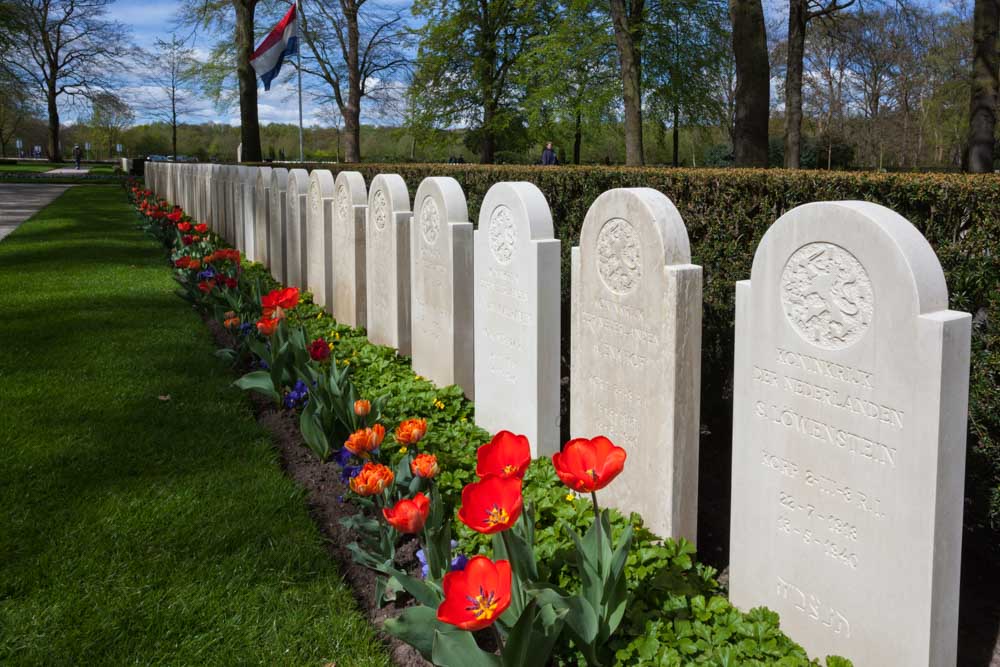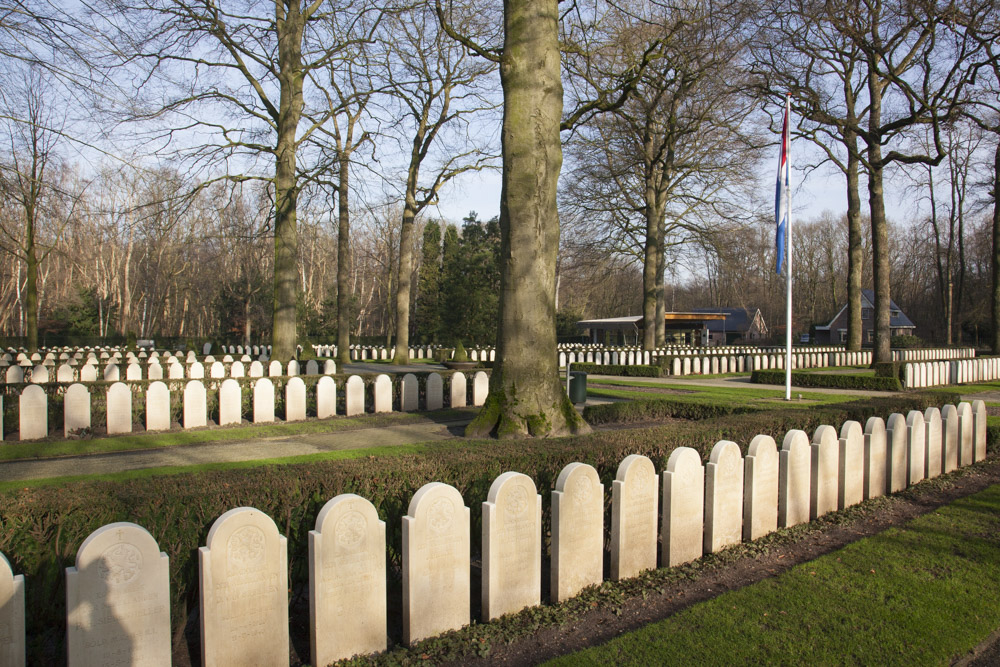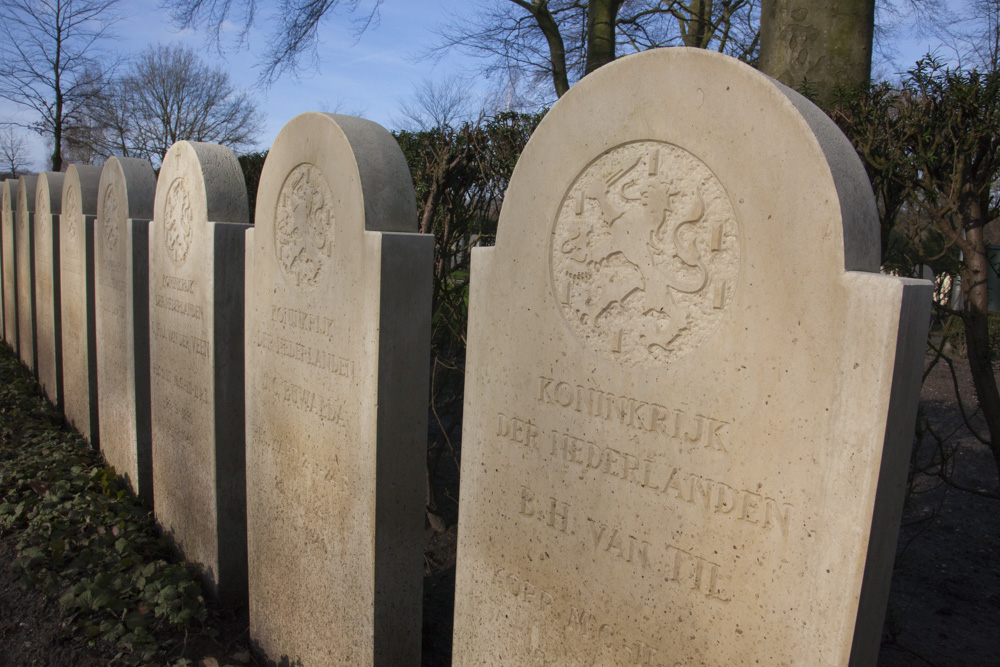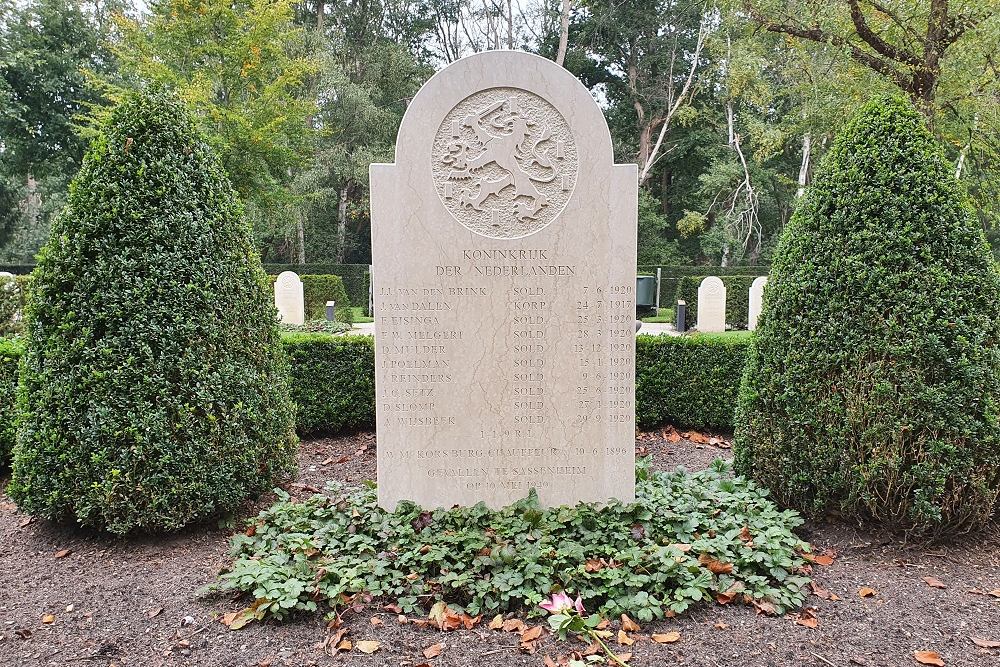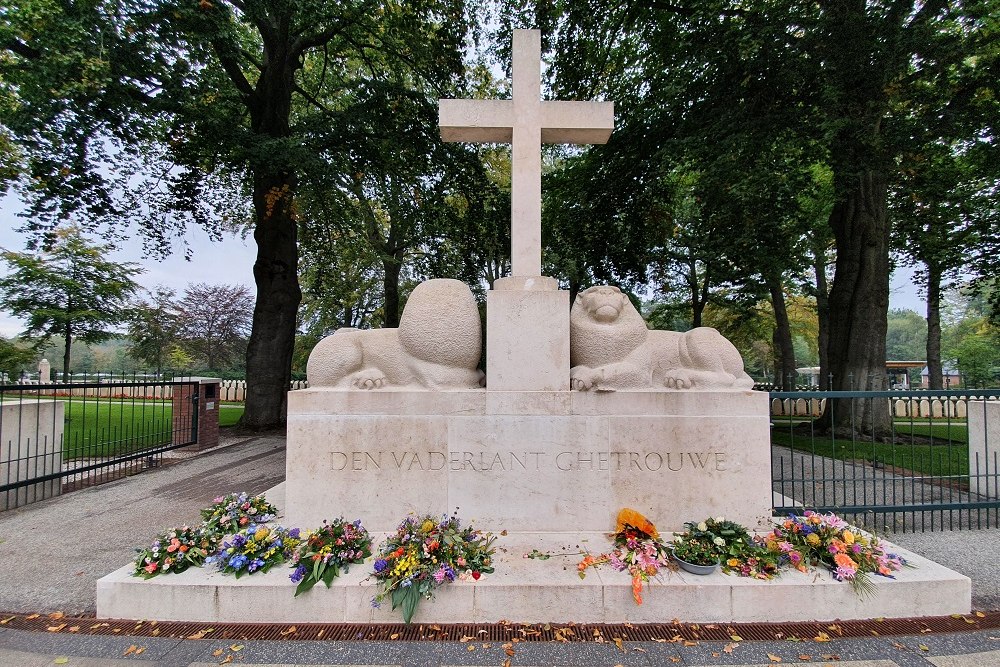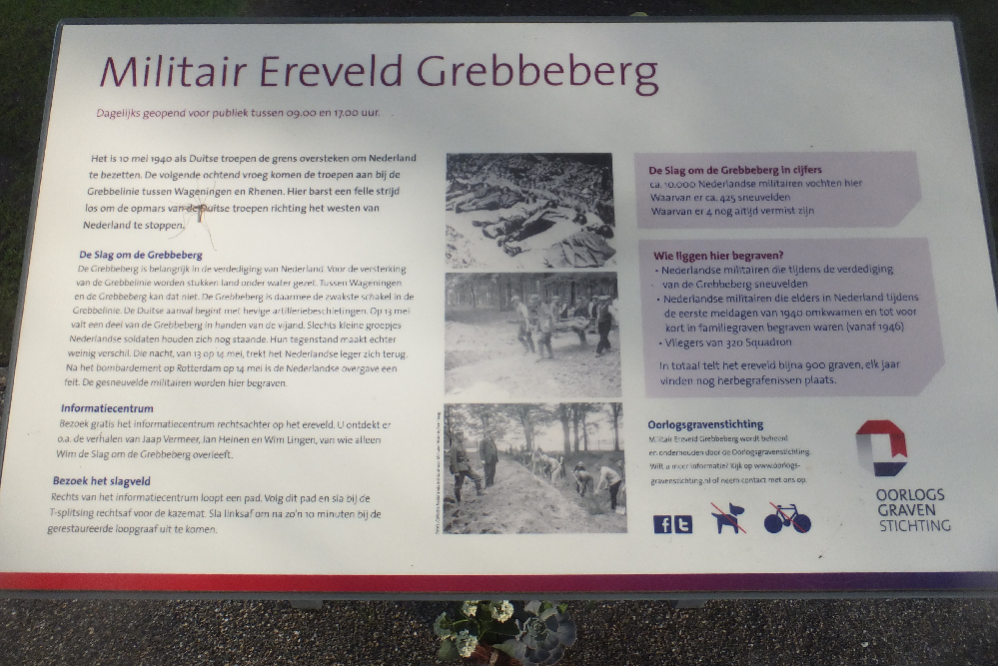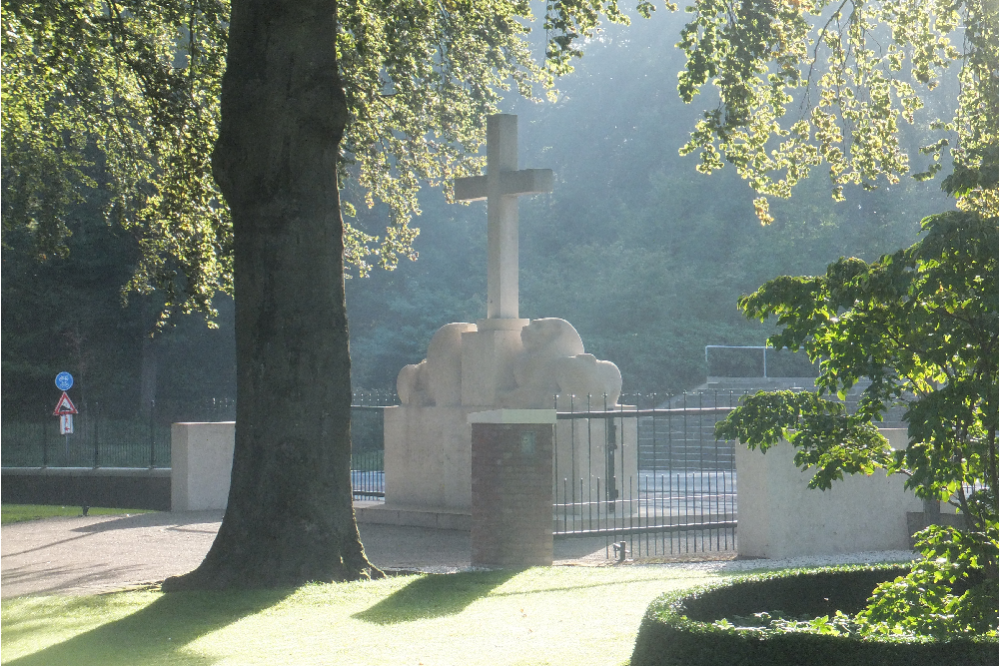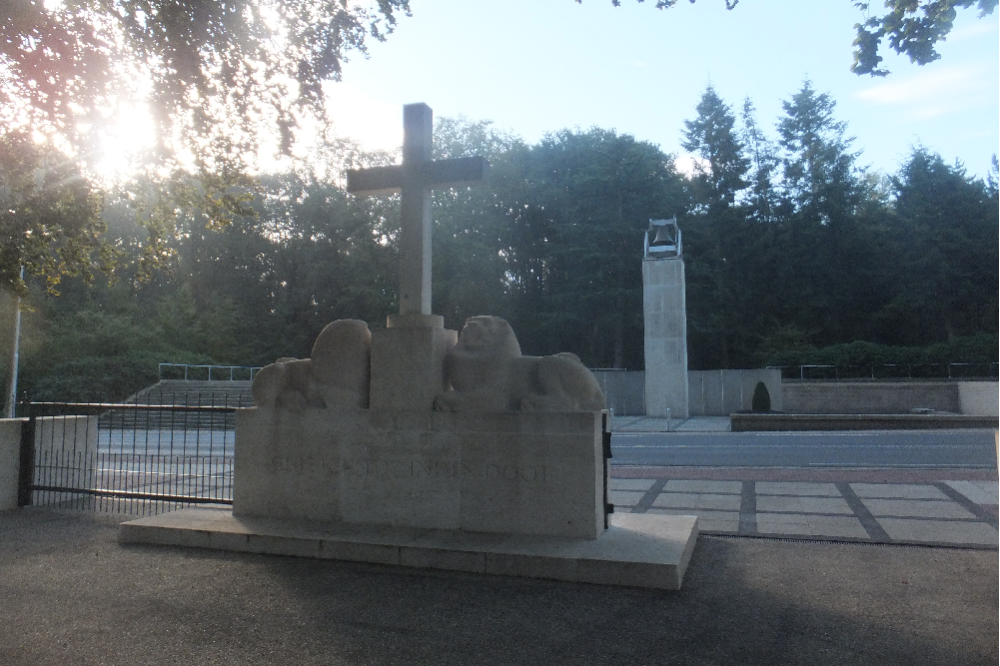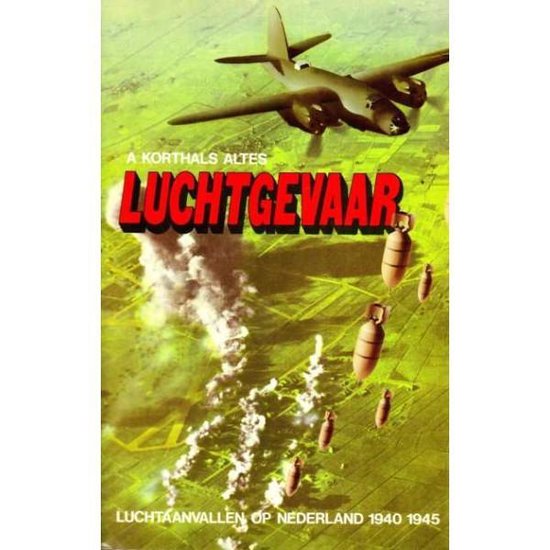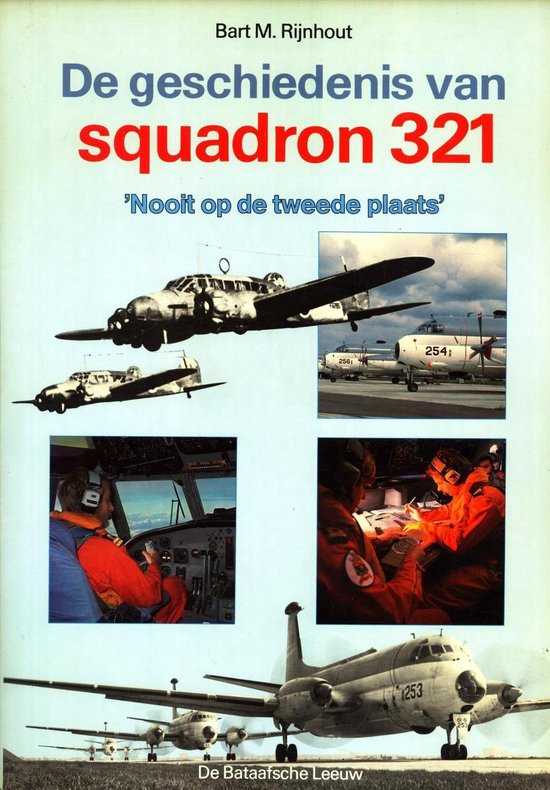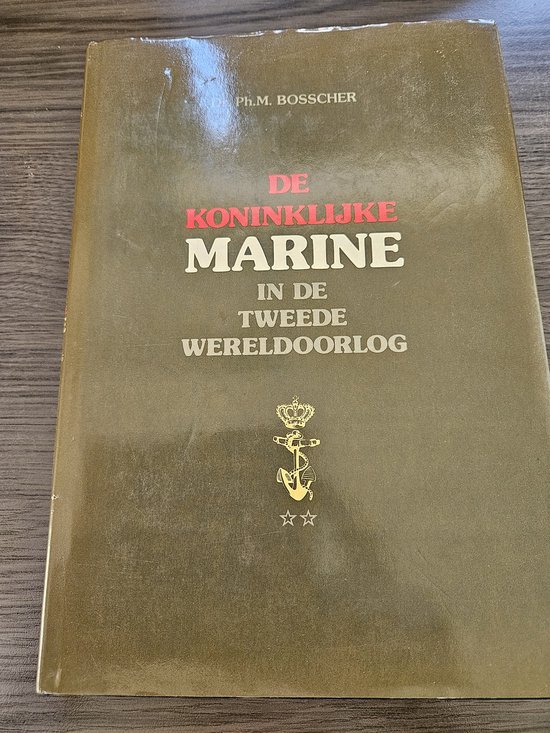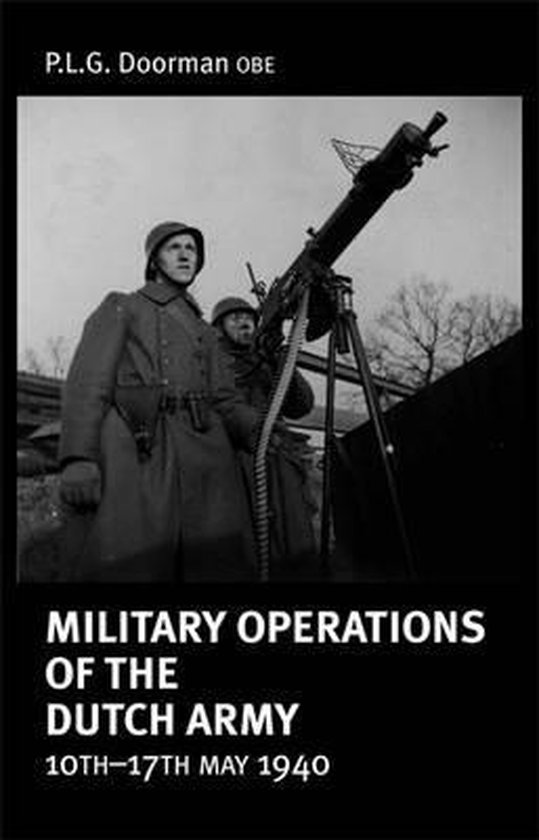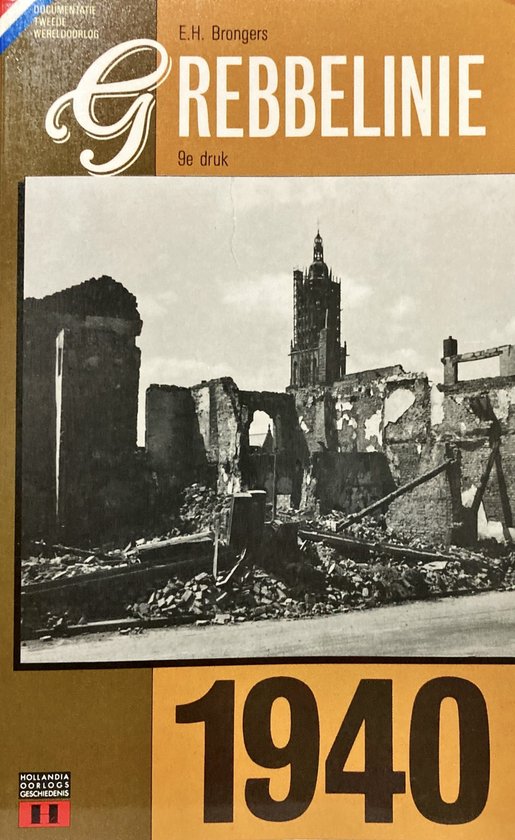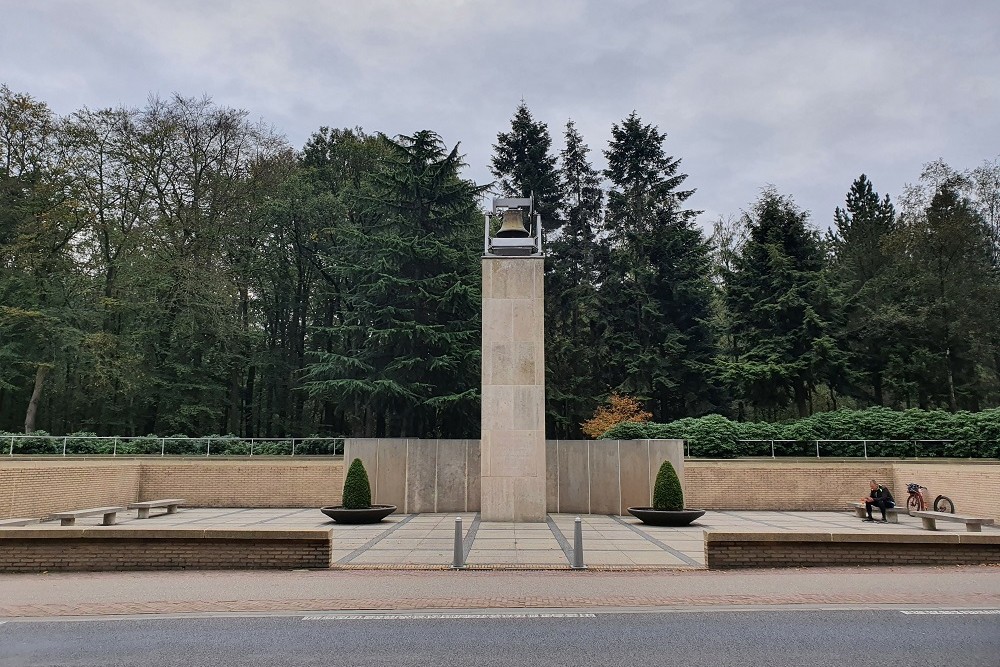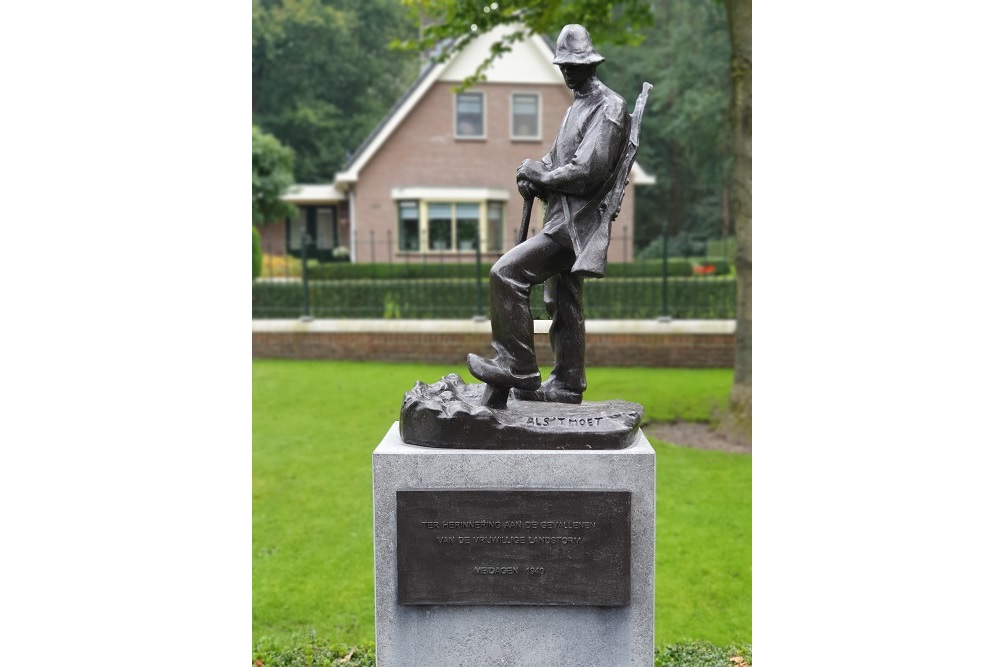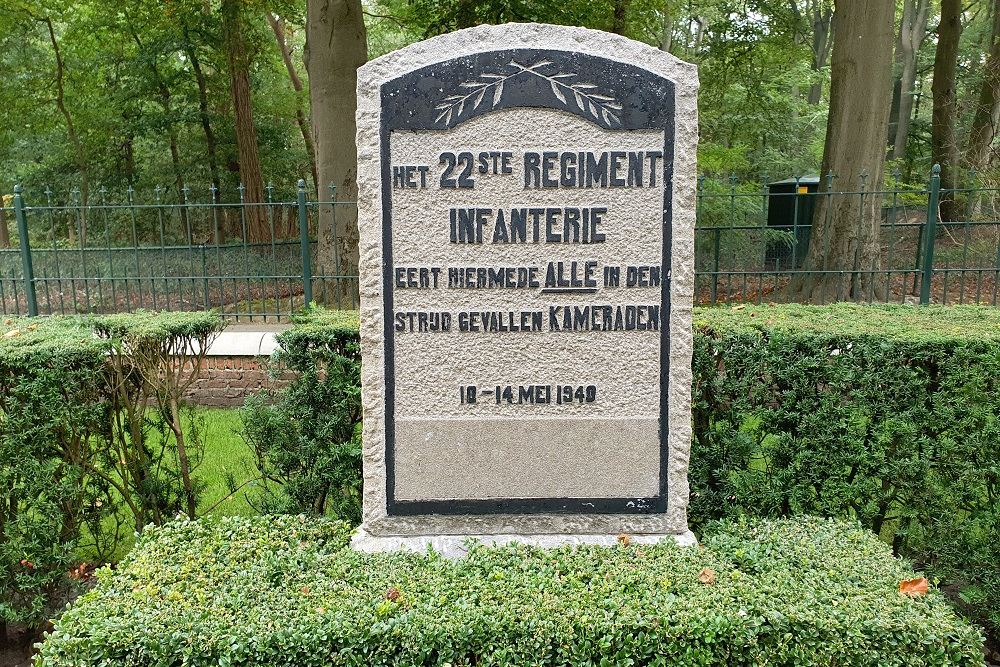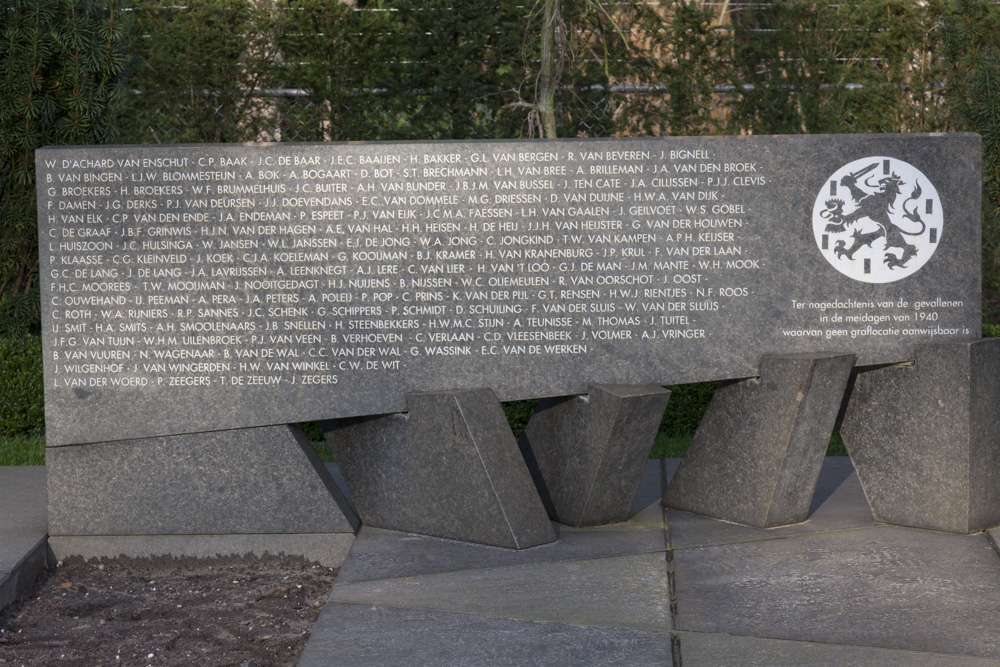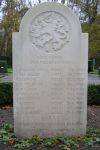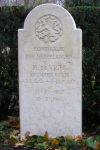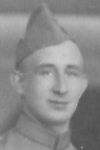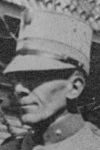Dutch War Cemetery Grebbeberg
After the Battle of Grebbeberg was fought between 10 and 13 May 1940, the search for fallen and wounded began. On the orders of the Germans, a group of local workers led by a Dutch major built the first Dutch war cemetery on Grebbeberg.
During the war, the German and Dutch casualties were in the same cemetery. After the liberation, the military cemetery was converted into a national memorial site. In the spring of 1947, it was therefore decided on the initiative of the Ministry of Defense to clear the German graves on the Grebbeberg. Those graves have been moved to the German military cemetery in Ysselsteyn.
The foundation National Army Monument Grebbeberg, founded in 1946, commissioned the production of the Lion Monument, which was unveiled in 1953. The monument, designed by the architect ir. J.J.P. Old and made by J. Raedecker and his son, it consists of a cross flanked by two lions and bears the inscription: Den Vaderlant Ghetrouwe - Blijf Ick Tot Inden Doot. Opposite this monument, on the other side of the Grebbeweg, is the National Army Monument. It is an open auditorium with a clock tower.
The cemetery now contains nearly 850 graves and several monuments, including those of the 8e, 10e and 22e Infantry Regiment. These monuments serve to commemorate those who fought and died on and around the Grebbeberg. There is also an information center at the field of honor.
Memorial The Lions
On the Dutch War Cemetery Grebbeberg is the Memorial The Lions.
The Memorial is a cross flanked by two lions and it was unveiled in 1953.
Do you have more information about this location? Inform us!
Source
- Text: Barry van Veen
- Photos: Arjan Vrieze (1, 2, 3), Patrick Molders (4, 5), Cheapskatetravel.nl (6, 7, 8)
Related books
Nearby
Museum
- Visitor Center And Museum Dutch War Cemetery Grebbeberg - Rhenen
- The Liberation Hall Museum "De Casteelse Poort" Wageningen - Wageningen
- War and- Garrison museum 'De Smederij' - Ede
Point of interest
- Aid station Cuneraweg - Rhenen
- Noda Farmhouse Rhenen - Rhenen
- Aid Station Farm "De Spees" - Opheusden
Monument
- Memorial Dutch 10th Infantry Regiment Dutch Military Cemetery Grebbeberg - Rhenen
- Memorial Fallen Vrijwillige Landstorm (Voluntary Home Guard) - Rhenen
- Memorial 8 R.I. Dutch Military Cemetery Grebbeberg - Rhenen
Cemetery
- Memorial to the Fallen with an Unknown Grave Location Dutch Military Cemetery Grebbeberg - Rhenen
- Commonwealth War Graves General Cemetery Rhenen - Rhenen
- Dutch War Graves General Cemetery Rhenen - Rhenen
Remembrance Stone
- Memorial Paltshof Rhenen - Rhenen
- Memorial stones Maurice and Yetty Elzas - Wageningen
- Memorial Stones Bowlespark 2 - Wageningen
Fortification
- Grebbe Line - Restored Trench "Stoplijn" Rhenen - Rhenen
- Grebbe Line - Trench "Frontline" Rhenen - Rhenen
- Grebbe Line - Remains G Kazemat GLZ18 - Rhenen
